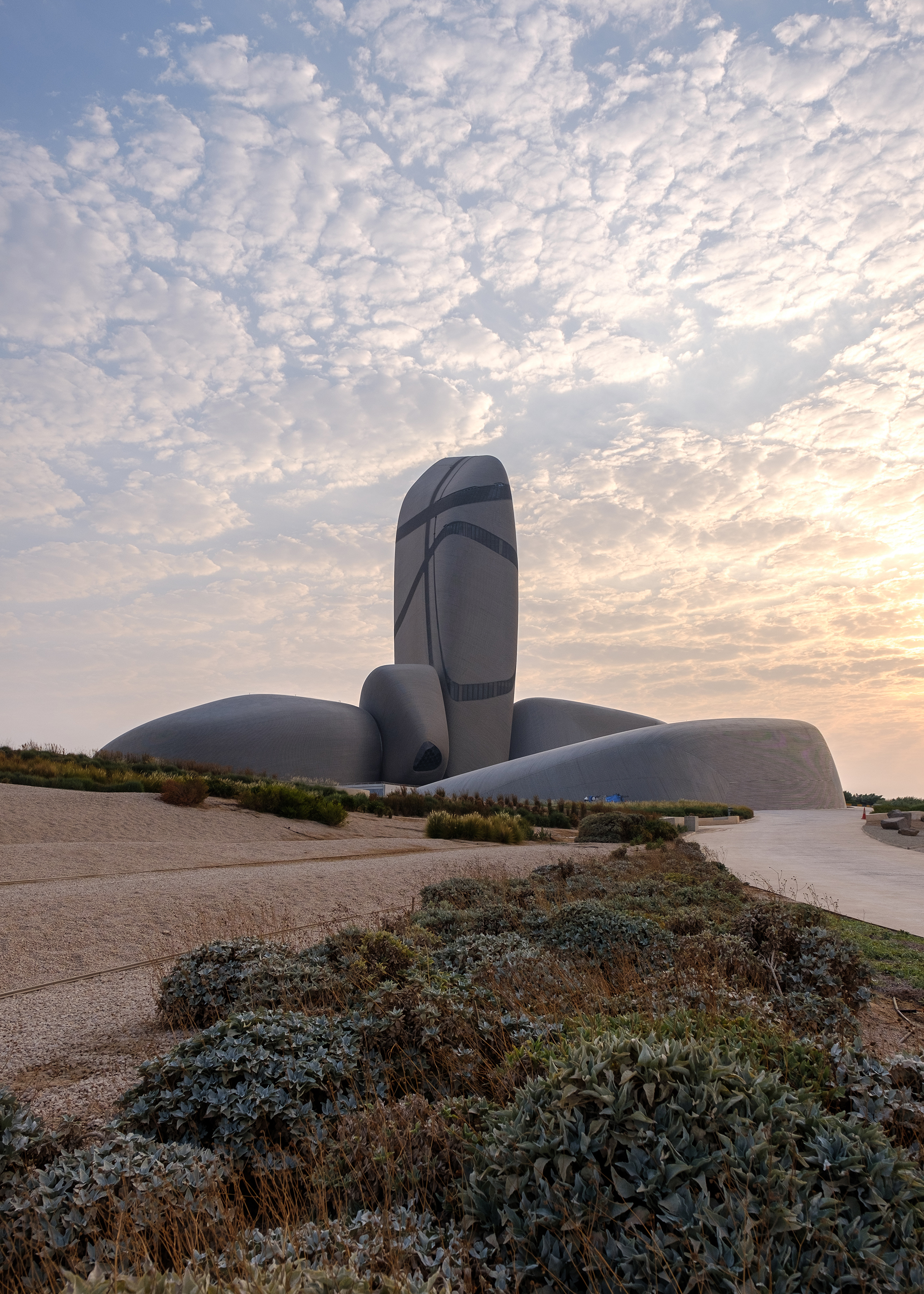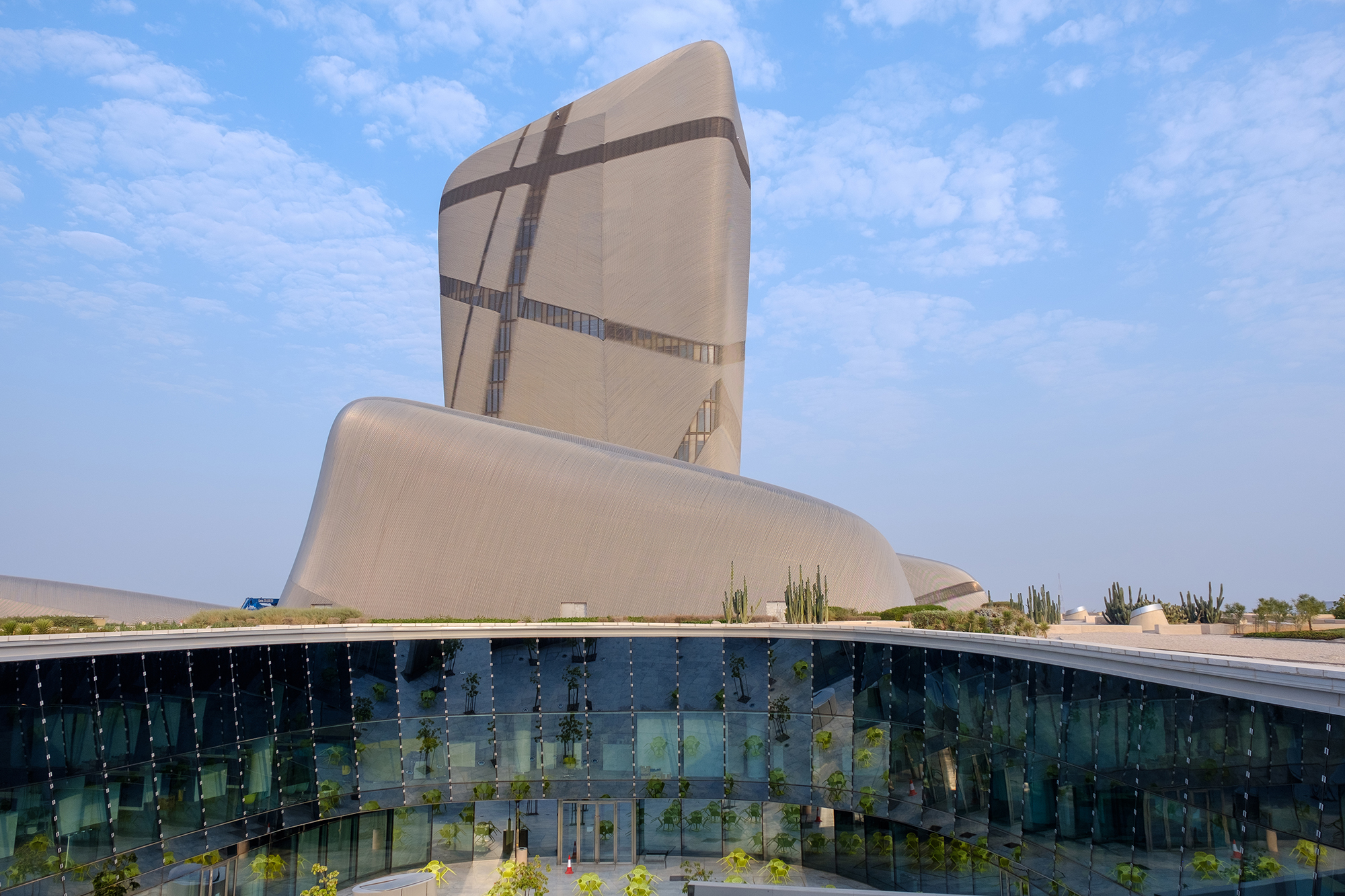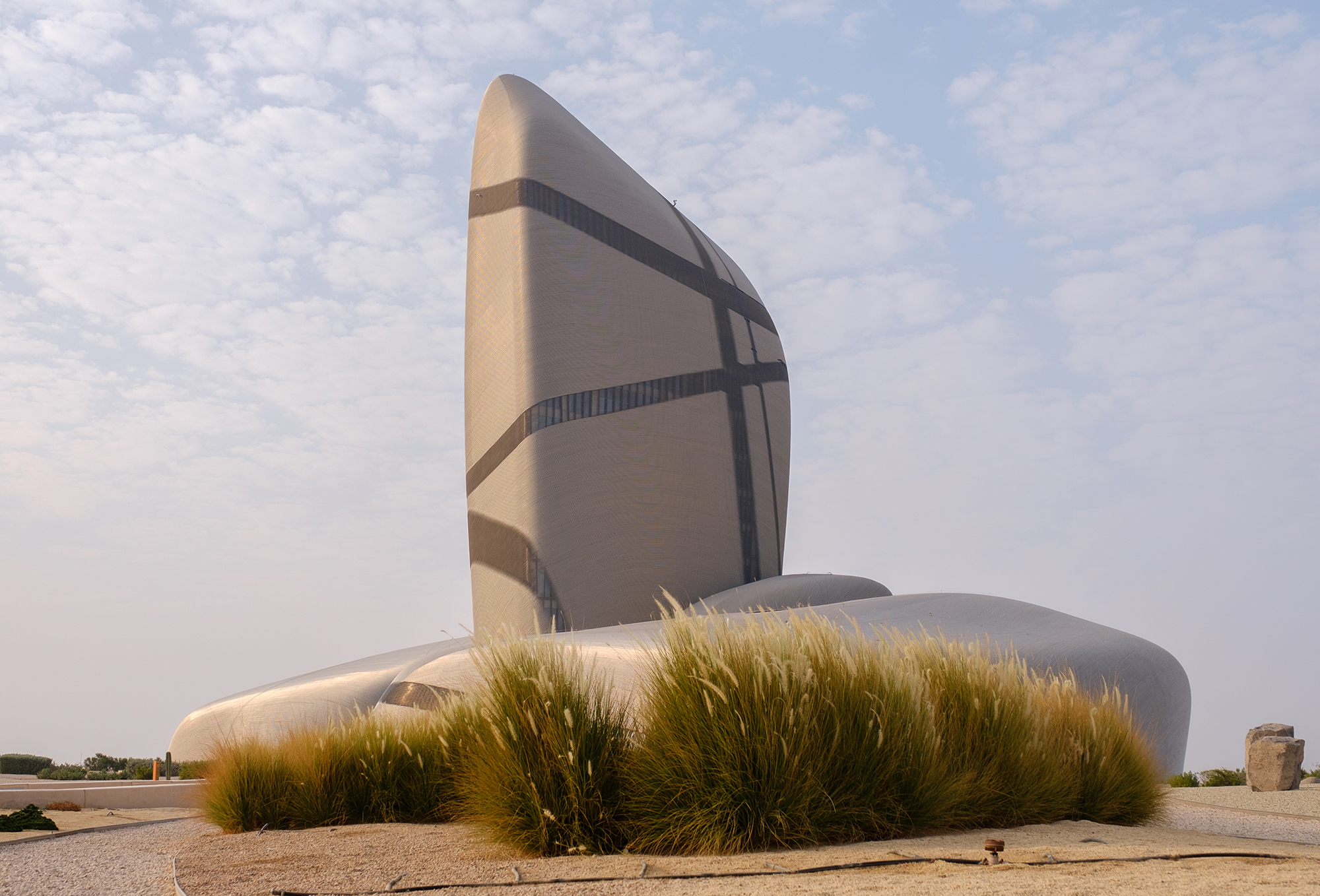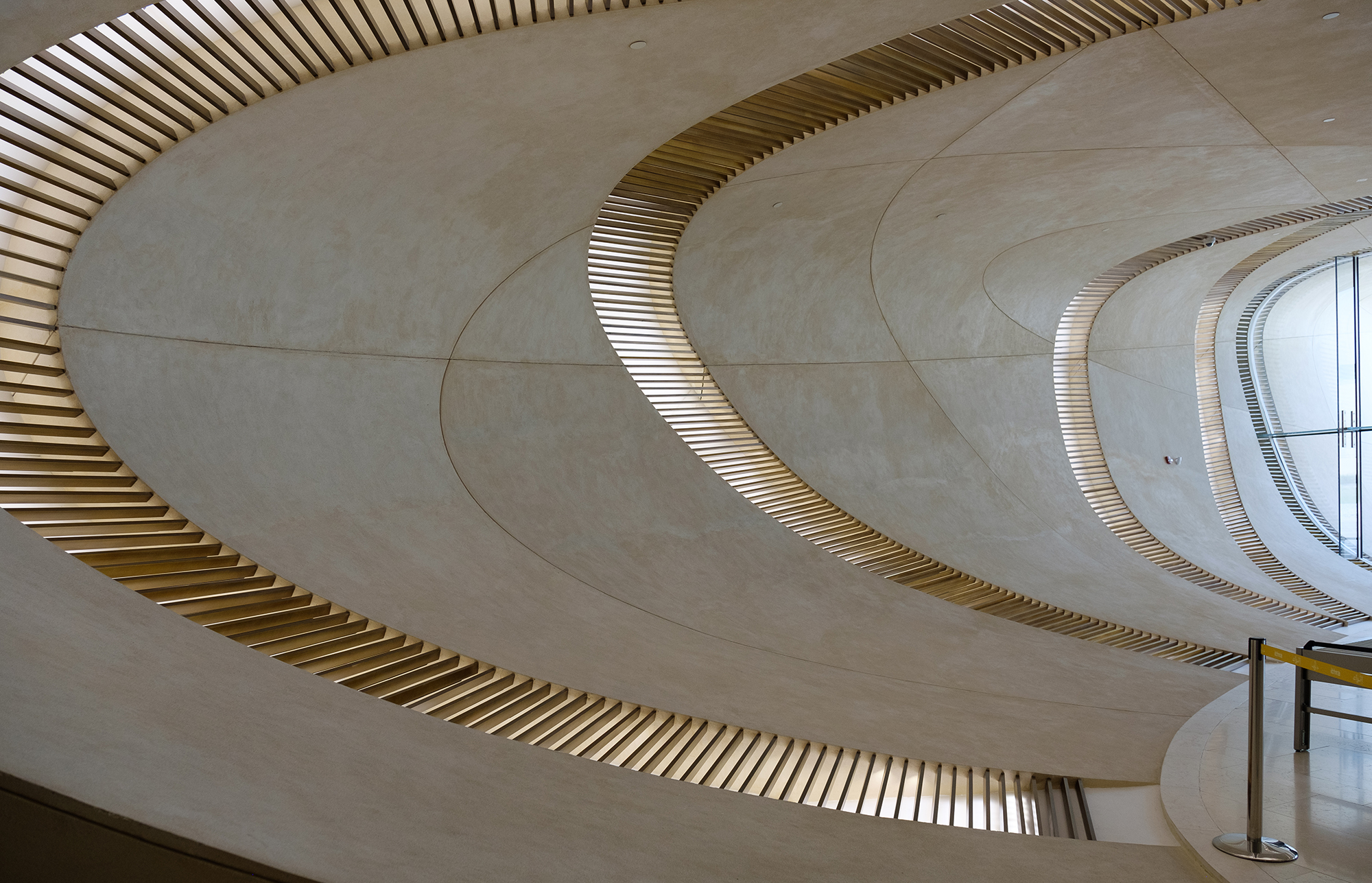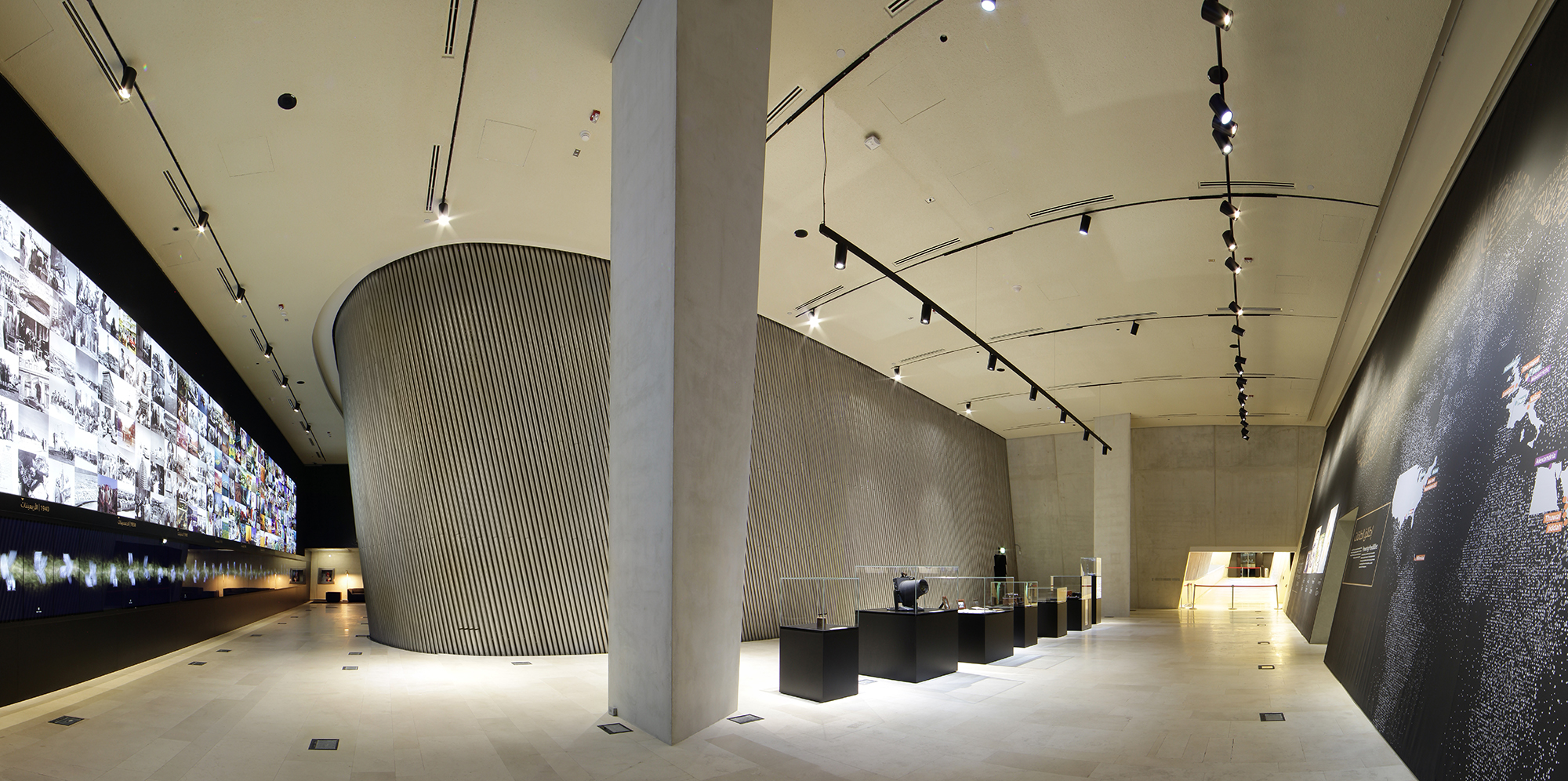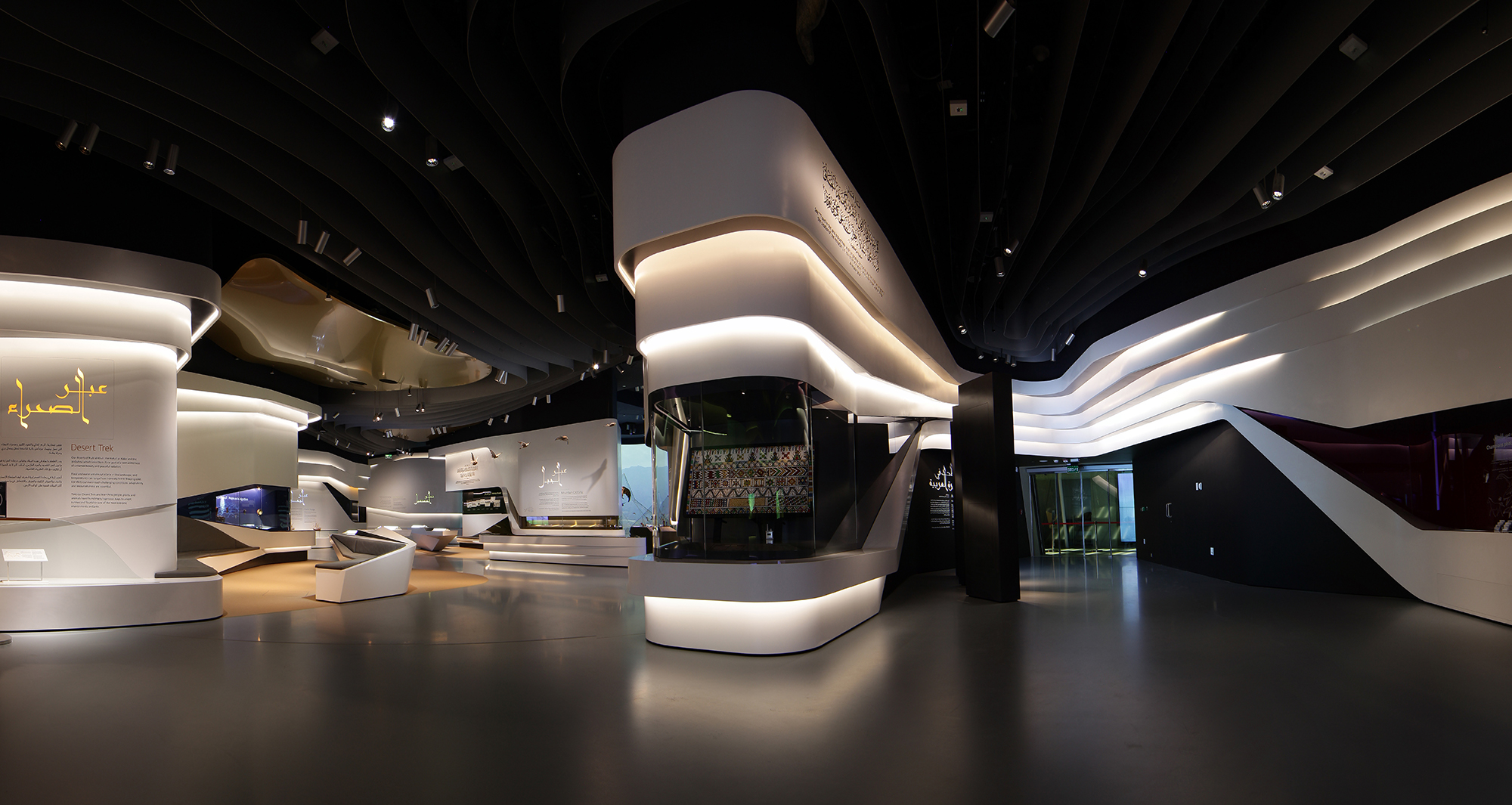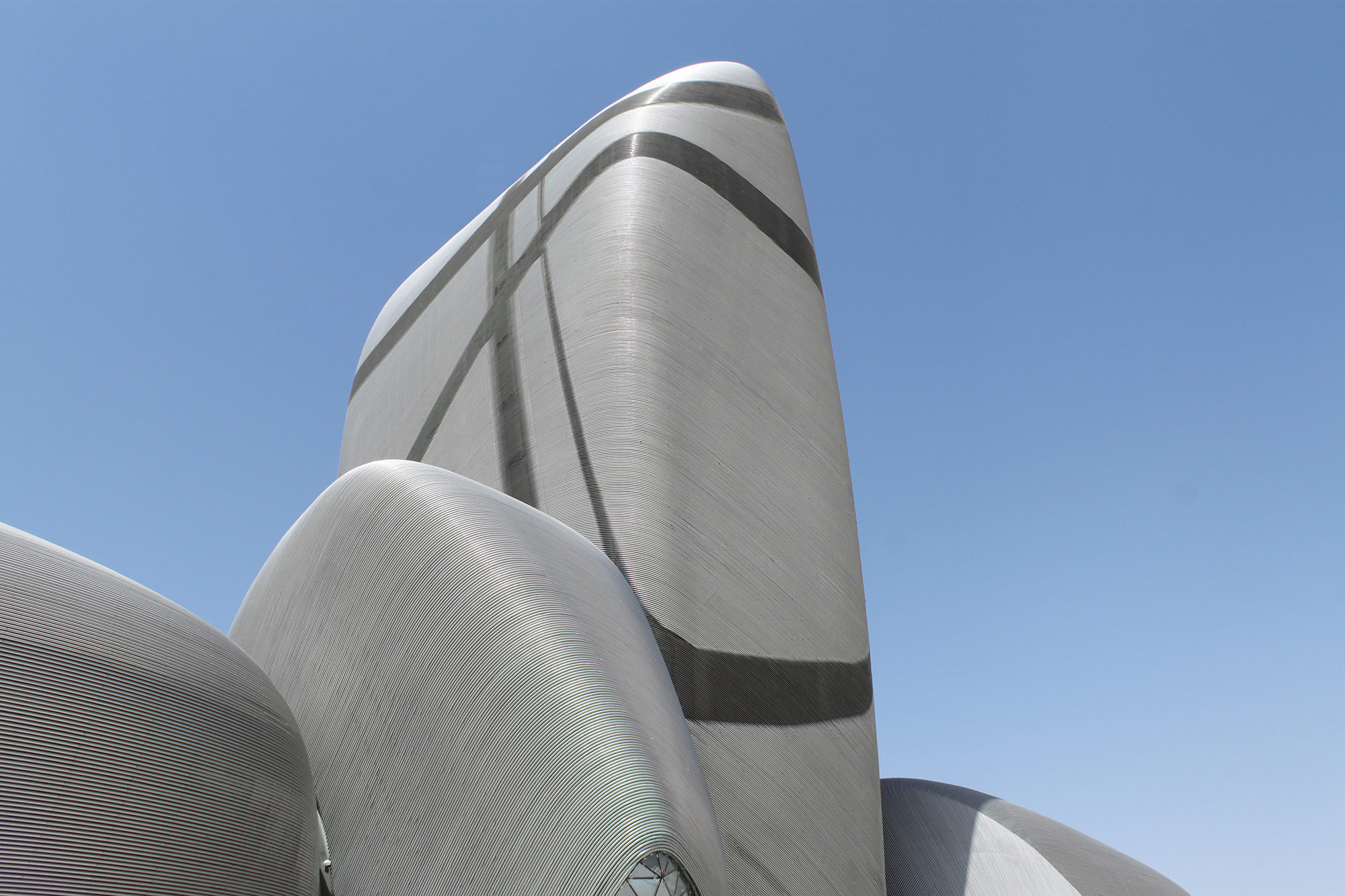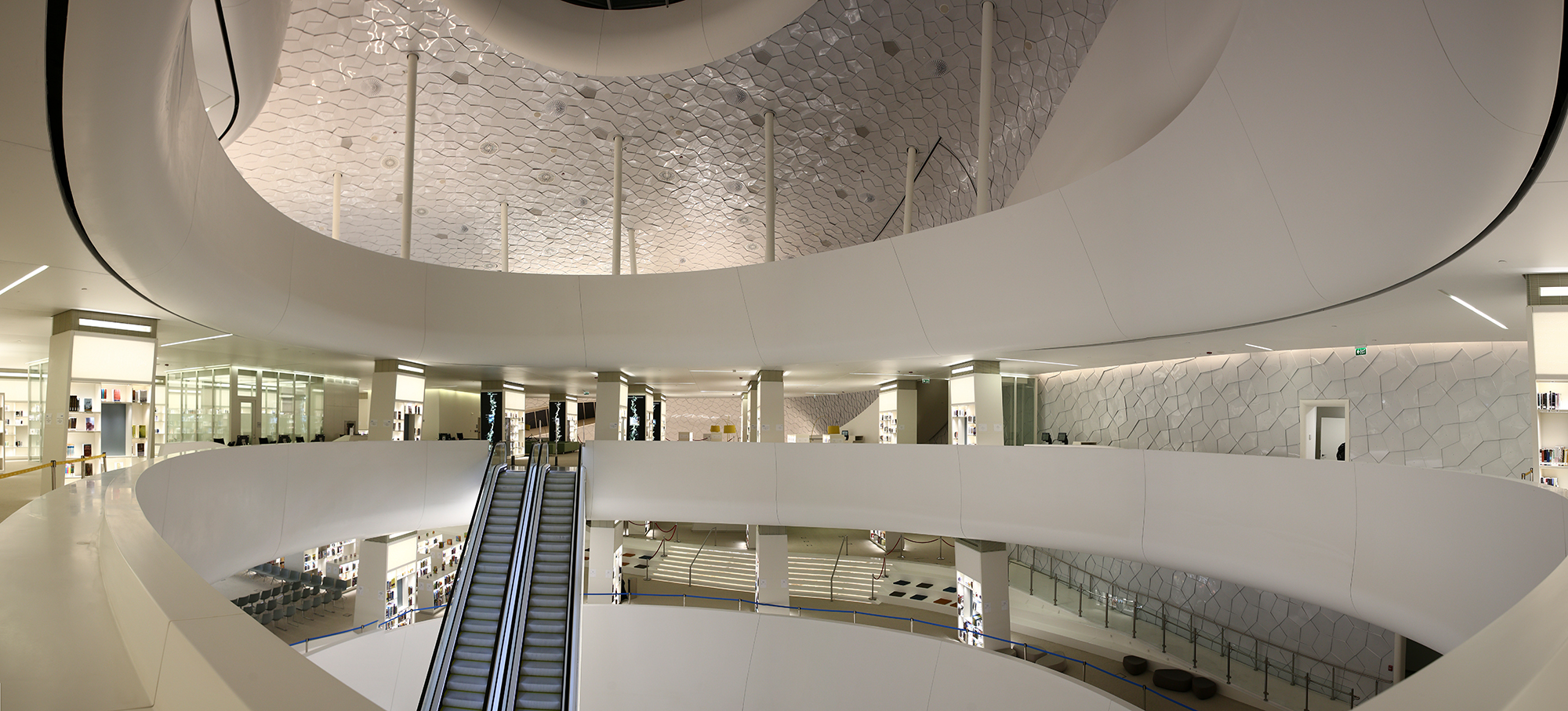A Delicate Raiment of Pipe: King Abdulaziz Centre by Snøhetta in Dhahran

Foto: Frans Parthesius
The King Abdulaziz Centre for World Culture, designed by Snøhetta, is a built testimony to Saudi Arabia’s wealth, which comes from oil; the centre also stands near the country’s first commercially exploited oil well. Inside, the complex unites a library, a further education centre for engineering and the natural sciences, a business incubator as well as a cultural museum and children’s museum. It also features a large event hall for congresses and travelling exhibitions, a concert and theatre auditorium with 900 seats, and a smaller lecture and cinema theatre for 300 people. The project was commissioned by Saudi Aramco, the world’s largest oil company.
The base of the structure, which asserts itself as a slightly hilly, concrete platform designed as a landscape garden, functions as an entranceway and distribution area. The five above-ground structures are similar to boulders, polished and rounded by sand and wind, which cover a fine, fingerprint-like grid of curved stainless-steel pipes. The pipes give the building a softly shimmering gleam, yet avoid the stark reflections of light that a large-format, metal sheet covering would have created. Furthermore, the pipes shade the thermal shell of the building, which lies behind them, while rear ventilation counteracts overheating.
The shapes and supporting structures of the individual buildings are as diverse as the constructive principle behind the façades and roofs is uniform: prefab sandwich elements made of steel sheeting, insulation and an aluminum standing seam roof with integrated steel supports serve as a thermal shell. Aluminum rails and titanium point holders have been used to secure the stainless-steel pipes to the standing seam.
The pipe cladding continues in front of the window bands on the tower, which rises about 90 m at the heart of the complex. There, it has been evenly pressed into flat, shading slats. The one break in the metal shell is formed by a 37-m² window opening in the smallest of the five boulders; this is held aloft by its neighbours like the main piece of an archway. Indeed, the architects have baptised it “the keystone”. At the touch of a button, the windowpanes can be darkened to control the fall of light into the presentation room behind them.
Further information:
Planning of structural framework: Buro Happold
Facade planning: seele



